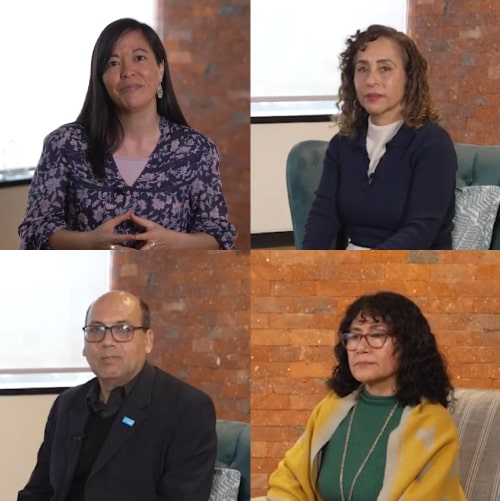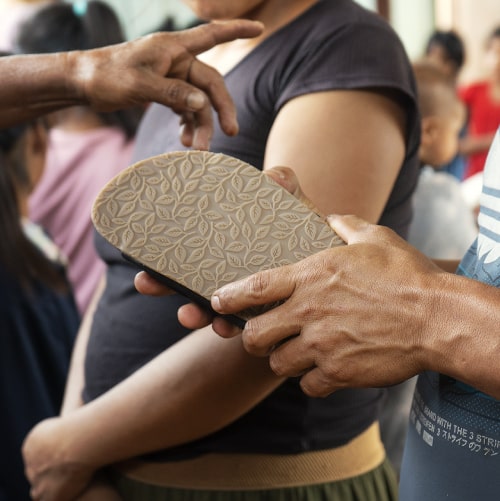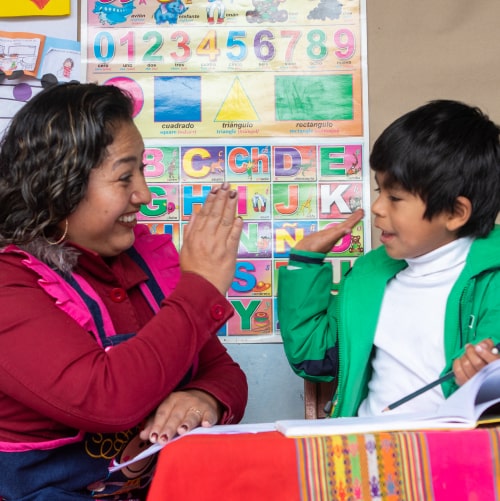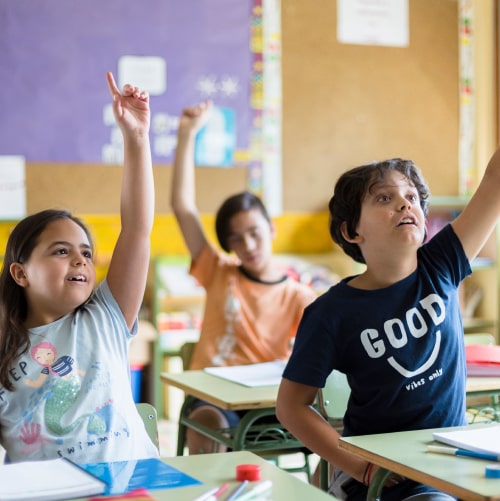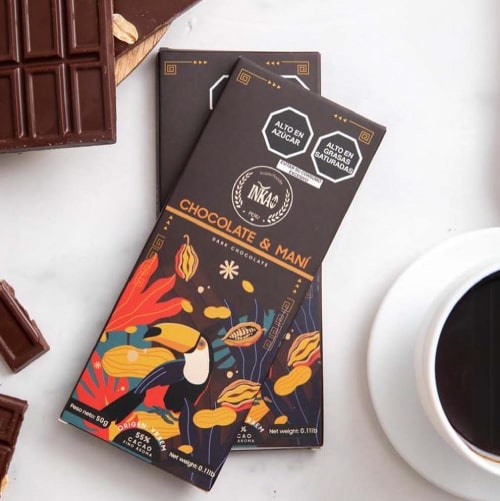- Wiese Foundation and Estrafalario have been developing a social project for the recuperation of pre-Hispanic textile techniques inspired in the Lady of Cao, in order to reinsert into the current market this practically forgotten know-how.
Since times immemorial, textiles have played a very important role among our ancestors, given that they were not only used as garments, but also to convey thoughts and to identify themselves inside and outside their group, getting a large part of society involved in their production. The northern coast of Peru, in particular, has been the scene of notable textile technological contributions in antiquity. This is evidenced by the considerable number of structures and techniques present in the textile pieces discovered at the El Brujo Archaeological Complex (CAEB, by its Spanish acronym); however, this knowledge is currently being progressively lost.
In the face of this situation and the changing times in which we live, Wiese Foundation and Estrafalario –one of the four businesses that comprise the portfolio of the Entrepreneur Fund, the Foundation’s innovation program– set out to develop a social project of recuperation of pre-Hispanic textile techniques, inspired in the Lady of Cao, in order to reinsert this practically forgotten know-how into the current market, through the creation of a fashion collection. Its execution involves the participation of female artisans and other neighbors of the district of Magdalena de Cao, the community adjacent to the archaeological complex, located in the province of Ascope, in the department of La Libertad, as well as professionals and technicians from the institutions that promoted the initiative.
Concurrently, Wiese Foundation has been promoting the conditions necessary for extending the initiative to youngsters, teachers and, in the near future, to children in the schools of the town. To that effect, we have signed a cooperation agreement with Educational Institution No. 80046, the primary school of Magdalena de Cao, for the use of ample and ventilated premises that will allow the safe training of the female artisans participating in this project. In these trainings, we have included with a special interest the teachers from the town’s schools, in order to provide them with a new valuable pedagogic tool for conveying culture and history in a dynamic manner to their pupils.

Thus, complex textile structures, such as floating wefts and warps or grooved carpets, used by the ancient Mochica for creating the beautiful textiles that accompanied the Lady of Cao in her funerary bundle, are being reproduced by the hand of Abigail Paulino, curator of cultural goods and specialist in the recuperation of pre-Hispanic textile techniques.
“Teaching and sharing my textile knowledge makes my exceedingly happy: knowing that I can ensure that more persons are interested in the textile world is the most satisfactory reward that I can obtain after a day’s work. When I was invited by Wiese Foundation to participate in this project, at Magdalena de Cao, I was greatly moved. Although I had experience teaching for several years in museums in Lima, this is the first time that I am part of a multidisciplinary project that combines archaeology, art and fashion. Teaching to this group of female artisans and teachers represents a great personal challenge for me, since my objective was not only to have them weave for this project, but that they feel heiresses to this knowledge and that they have the capability and desire to weave for themselves, becoming experts who teach and guarantee the permanence of this know-how in future generations of Magdalena de Cao”, stated Abigail with much enthusiasm.
This type of initiative has not only been benefiting the aforementioned players, but also other members of the community, such as wood artisan Lucho Iparraguirre, a famous representative of Magdalena de Cao in several editions of Ruraq Maki, one of the largest handicraft fairs in the country. “I feel happy about having made the frames for the artisans… contributing, that way, to the discovery of more talents in the art of looming, as well as complementing other handicrafts in our area” said Lucho, after completing the delivery of 17 looms made of Tornillo wood for the conduct of the workshops.
There is no doubt that, as in ancient times, textile production promotes work dynamics where the collective effort generates union and strengthens cultural memory and identity. Having youngsters and children participate in these initiatives shall be essential in revaluing our past and building citizenry.
“I am a teacher and have noticed that these techniques could help considerably children who lack concentration; therefore, what I am learning will be handed over to my children in their art course. Also, I have a garment store and I know that this would help me to maybe start creating new designs or starting a new business”, concluded Jessica García, a 28-year-old teacher who has been participating in the workshops.

In order to consolidate and enrich this initiative, the same professionals who guard the archaeological collections of El Brujo provide technical advice to the participants in the project, in order to ensure that the structures, techniques and designs that are taught in the workshops have contextual and historical information that further nurture their learning. Along this line, the workshops include the participation of archaeologists who tell the history of pre-Hispanic textile production throughout the 14 thousand years of history of the El Brujo Archaeological Complex.
“One of our objectives is to build awareness of the archaeological collections within the community, as we are convinced that, in order to really guarantee their preservation, we need not only the research and conservation of these objects, but also to make them known to the people, through pedagogic strategies, from an early age”, pointed out Rubén Buitron, head of the CAEB laboratory.
The workshops on pre-Hispanic textile structures and techniques that are being promoted by Wiese Foundation will continue to be conducted at Magdalena de Cao and are meant mainly for female artisans, teachers and adults in general, in order to perpetuate the ancestral knowledge in their surroundings in a practical way, to turn them into pedagogical tools for teachers and to promote future undertakings that may contribute to the economy of their homes.
All this constitutes more evidence of the potential for the social impact associated to our invaluable archaeological cultural heritage.



